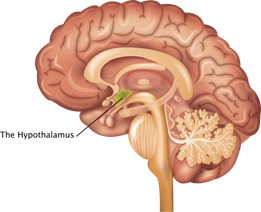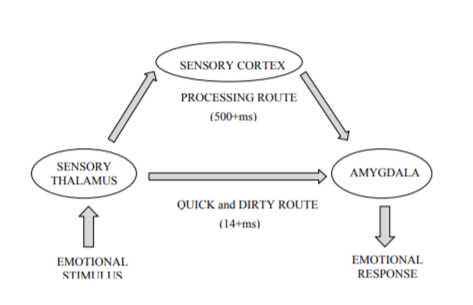Aviation has many environmental pressures that personnel are exposed to daily. It is well documented and understood that working as a commercial pilot can be an extremely demanding job due to the many stressors – high workload, heavy responsibilities, time pressures, fatigue, noise, and temperature – experienced while transporting thousands of passengers/cargo round the world. Dismukes, Goldsmith and Kochan (2015) outline the stressful situations pilots are exposed to:
Emergencies and other threatening situations require pilots to execute infrequently practiced procedures correctly and to use their skills and judgment to select an appropriate course of action, often under high workload, time pressure, and ambiguous indications, all of which can be stressful.
Sudden and severe stress generates the following bodily responses:
- increase in heart rate
- increase in breathing
- decrease in digestive activity
- liver released glucose for energy
Our bodies assess whether or not a situation is stressful based on sensory input and stored memories. If the situation is judged to be stressful, the hypothalamus is activated.
 Diagram of the brain with the hypothalamus labelled
Diagram of the brain with the hypothalamus labelled
As Figure 1 shows, the hypothalamus in situated in the centre of the brain. It’s responsible for maintaining a balanced bodily state. This branch of the brain, the autonomic nervous system (ANS), is highly responsive to stress, and most of the communication is automatic and unconscious. The goal of the autonomic nervous system is to maintain homeostasis, and it does so by utilising its two subsystems – the sympathetic nervous system (SNS) and the parasympathetic nervous system (PSNS).
If a stress response is triggered, it sends signals to the connected structures between the endocrine and nervous systems: namely, the pituitary gland and the adrenal medulla. Acute or short-term stress elicits a ‘fight or flight’ response via the sympathomedullary pathway (SAM) or sympathetic nervous system, whereas long-term or chronic stress is regulated by the hypothalamic pituitary-adrenal (HPA) system or parasympathetic nervous system (Cannon, 1932; McLeod, 2023). Acute stress relates to something that is threatening, sudden, and typically short-lived. Chronic stress involves an ongoing environmental demand.
During acute stress, the hypothalamus activates the sympathetic branch of the ANS and then signals the adrenal medulla to secrete hormones called adrenaline and noradrenaline. This release of adrenaline produces changes in the body such as increased sweating, heart rate and blood pressure, and a reduction in digestion. Essentially, this results in oxygen being pumped quickly to the muscles in preparation for a ‘fight or flight’ response. Once the threat is gone, the parasympathetic branch (rest and digest) takes over and brings the body back to a balanced state.
The term ‘fight or flight’ was coined by Cannon in the early 1920s, describing an instinctive physiological response to a threatening situation. Fight is the tendency to resist forcibly, whereas flight responses involve wanting to run away or flee from the event (Lang, 1994). However, other researchers have since developed this idea to include a multitude of responses, such as a freeze response (Barlow, 2002) which may occur in some threatening situations.
Surprise and startle responses can occur in reaction to a sudden, intense, and unexpected stimulus. It is important to understand before proceeding, however, that not all unexpected stimuli may lead to a negative stress response or produce an overtly physiological and/or emotional reaction.
The psychology of surprise
The concept of surprise is key to many aspects of human behaviour and can facilitate curiosity and learning. When something is surprising, humans tend to remember it more. Surprise is one of the basic emotions as it is recognised universally across cultures, but it is quite an unusual one.
Ekman (2021) includes surprise along with seven other emotions and explains its function as focusing our attention to determine what is happening, and to assess whether this situation is dangerous or not. In this way, surprise as a feeling can be positive or negative, varying with the importance of the outcome, as well as our beliefs about the outcome. For a pilot, the feeling of surprise might be something that violates a pilot’s expectations. For example, an aircraft may experience a technical failure – the pilot’s beliefs about the outcome of this failure may be a positive or negative feeling and can shape the experience of other emotions.
Physiological responses to surprise include changes to multiple systems in the body (e.g., cardiovascular, respiratory, muscular, endocrine, nervous systems). For example, heart rate, blood pressure and breathing increases (Rivera et al., 2014). Responses to surprise can cause performance decrements (e.g., action delays, increased error rate, deterioration of conscious perception and memory) as well as an attentional shift interrupting the ongoing processes of a parallel task (Horstmann, 2005; Reisenzein et al., 2006; Reisenzein & Studtmann, 2007; Asplund et al., 2010). In this sense, the attentional system becomes more focused and impairs the working memory (Martin et al., 2012). While the focus can help to evaluate the situation, people can tend to focus on the most prominent information, which may not be the most helpful or significant information at that time (Rivera et al., 2014). The combination of the impaired working memory together with this tunnelled focus may also cause problems for the person experiencing surprise on their main tasks.
It is important to differentiate feelings of surprise with startle. Horstmann (2006) argues that surprise is a consequence resulting from a disparity between the expectations of a person and what they might have perceived to happen. Whilst surprise is a feeling that occurs when something is unexpected, startle is a physical reflex that can be experienced whether or not an individual is expecting it. Also, the surprise response tends to be longer than the experience of the startle reflex (Ekman et al., 1985).
Startle effect: the amygdala hijack
The startle reflex is an uncontrollable and automatic response to a sudden, intense stimulus (Field et al., 2015) which is accompanied by an emotional component influencing how an individual might respond to the unexpected stimulus (Lang, Bradley, and Cuthbert, 1990). Essentially, it is due to an intense event that violates the pilot’s expectations and is a threat to survival. This intense stimulus triggers an involuntary physiological reflex, such as muscular tension and an increased heart rate. The latter are necessary to prepare the body for the fight-or-flight response (Field et al., 2015; Koch, 1999).
 Le Doux, 1997The startle effect is also known as the ‘amygdala hijack’ because the amygdala is central to the startle response (Le Doux, 2000). The amygdala is a structure in the limbic system that is involved directly with motivation, particularly related to survival and our emotions. It is also responsible for processing emotions such as fear, pleasure, and anger. As mentioned earlier, the hypothalamus is triggered if there is a stress stimulus – this almost immediately sends signals to the amygdala, which will trigger a first response to the possible danger through the body. Signals sent to the amygdala may induce the startle reflex, while these same signals will be sent to the sensory cortex for cognitive processing (Martin et al., 2016). The speed at which this is processed provides humans with the means of reacting very quickly to a threat, but can produce a multitude of false alarms. This process is known as the ‘quick and dirty’ pathway (Le Doux, 1997).
Le Doux, 1997The startle effect is also known as the ‘amygdala hijack’ because the amygdala is central to the startle response (Le Doux, 2000). The amygdala is a structure in the limbic system that is involved directly with motivation, particularly related to survival and our emotions. It is also responsible for processing emotions such as fear, pleasure, and anger. As mentioned earlier, the hypothalamus is triggered if there is a stress stimulus – this almost immediately sends signals to the amygdala, which will trigger a first response to the possible danger through the body. Signals sent to the amygdala may induce the startle reflex, while these same signals will be sent to the sensory cortex for cognitive processing (Martin et al., 2016). The speed at which this is processed provides humans with the means of reacting very quickly to a threat, but can produce a multitude of false alarms. This process is known as the ‘quick and dirty’ pathway (Le Doux, 1997).
The other way the brain processes startling stimulus is in the neocortex pathway (Mauri, 2018). This is slower, but processes the information more deeply. Here, the thalamus simultaneously sends a signal to the neocortex, where it is further analysed to determine whether the threat is dangerous with immediate action being required, or if it’s a false alarm (Field et al., 2015; Martin et al., 2012).
Essentially, during a threatening situation, part of the stimuli goes directly to the amygdala – the ‘emotional/irrational brain’ – while other parts are sent to the neocortex – the ‘thinking/rational brain’. This can lead to a potential battle between the ‘rational’ and ‘irrational’ parts of the brain. The amygdala, however, can process the information milliseconds quicker than the neocortex. This is why someone might act irrationally and destructively before processing the threat appropriately. According to Goleman (1996), an amygdala hijack exhibits three signs:
- strong emotional reaction
- sudden onset
- post-episode realisation about whether the reaction was inappropriate.
The thalamus can bypass the cortex, which means that emotional reactions and responses can be formed without any conscious or cognitive participation, with the amygdala acting completely independently of the neocortex (Goleman, 1996).
Even though startle and surprise often occur together, the startle reflex can be triggered without the notion of surprise (Ekman et al., 1985). Something like ‘corner rush’ that motorcyclists experience can elicit a surprise and startle response (Owton, 2022). However, a runner may know the bang of a gun is going to sound, but the runner will usually still have a startle reflex resulting from the gun sound. If you think about your own experiences of being startled, you can imagine just how short the duration lasts (ranging from 0.3 to 1.5 seconds) (https://core.ac.uk/download/pdf/143876267.pdf). Muscular activity can be inhibited by startle and a person may stop what they were doing (Koch, 1999). This disruption can last from 100ms to 3 seconds for basic tasks, and up to 10 seconds for more complex motor tasks (Rivera et al., 2014). Cognitive processing, decision-making and problem-solving can be impaired by 30-60 seconds, increasing as tasks become more complex (Rivera et al., 2014). Additional cognitive responses include the following:
- confusion
- loss of situational awareness
- disorientation
- impairment of working memory (e.g., forgetting current operating procedures)
- impairment of problem-solving and decision-making.
Indeed, as Field et al. (2015) note, disruption caused by the startle reflex can have detrimental effects on the flight deck, particularly when the startle is elicited while the pilot is performing flight essential tasks or making a difficult decision, which might lead a pilot to lose situational awareness (Rivera et al., 2014). Therefore, ‘selective awareness’ is the skill involved in paying attention to relevant stimuli and ignoring irrelevant stimuli. The ability to shield oneself from stimuli that might disrupt one’s focus of attention is a key skill that can be developed and improved through practice.




Rate and Review
Rate this article
Review this article
Log into OpenLearn to leave reviews and join in the conversation.
Article reviews